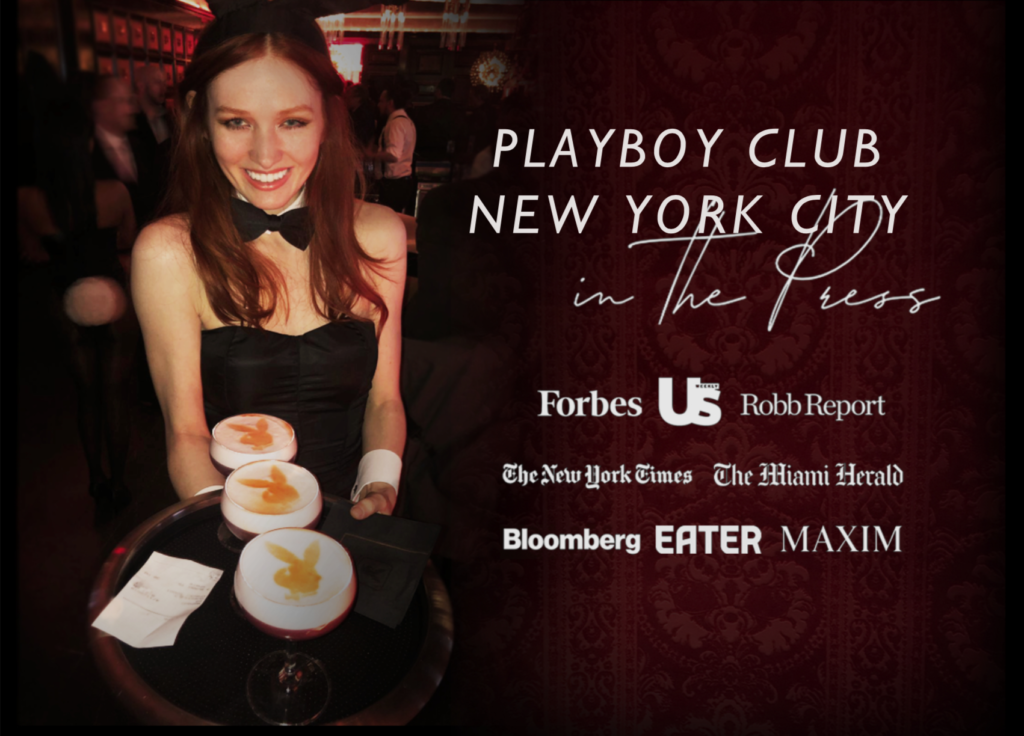
Published September 24, 2019
Playboy Club, The Iconic Brand
Nicole Levinson, SVP of Brand Marketing at Playboy Club, led a masterclass at the Inspired conference in New York to share her experiences in building the brand through traditional and digital marketing.
“I love building luxury brands,” Nicole says. “Wherever your brand is – whether it’s at its starting point, or it’s 50 or 100 years in – you can always be aspirational and luxury and go down, but it’s very hard to be a brand that’s just coasting by in the middle range and raise it up.”
The Playboy Club opened in New York in 2018, becoming the second of the brand’s clubs to make a comeback. “When the club opened in September, it was probably 30 years since the last club was in New York,” Nicola says. “In 1986, the height of the Playboy brand, there were around 36 clubs worldwide.”
Nicole believes that one of the most important things about working on a brand is working on it at the right time. “This is a really pivotal moment in the Playboy brand’s history,” she says. “Hef passed away and Playboy corporate is going through a reinvigoration itself, so this is an exciting moment because there are a lot of eyes on the brand. Everybody’s wondering, what is the next reiteration of the brand?”
Inspiration for the club came from the iconic Playboy mansion. “The mansion wasn’t necessarily known for its architecture, it was the spirit of the mansion,” Nicola explains. “All the incredible iconic parties, and just the aura of being around Hef and never knowing who you were going to run into. We wanted to take that spirit and bring it into New York, but do it in a way that was a reinvention of the brand, so people would feel that it has relevancy.”
Nicole and her team work very hard to push the Playboy Club as a luxurious venue for dinner and drinks. “A lot of people have different brand perceptions of what Playboy is,” she says. “It’s very important in the reinvigoration that I’m always pushing not only the iconic brand, but the fact that we are a sophisticated drinks and dinner experience – which is what the club was 50 years ago.”
People are often surprised that the Playboy Club was brought back during the #MeToo era, but Nicole says it was very easy. “If you know the history of the brand, Playboy has always supported women’s rights, gay and lesbian rights, African American rights,” she explains. “You have to go back and remind people of the history. That’s a really important lesson, because there could be a hundred different brand stories. It’s your job as a marketer to pull out those brand stories.”
Nicole and her team began by looking at the history of Playboy, establishing what the mansion was known for and how this could be made relevant today.
“There used to be a backgammon night,” Nicole says. “Backgammon is not the most relevant game among Millennials these days, but we’re evolving it and bringing in other types of games that appeal to many different generations – everything from Jenga to Cards Against Humanity.”
They also introduced a comedy night called Laughing Out Loud. “Hef supported a lot of comedians back in the day,” Nicole explains. “Comedy brings people together, so we do it in our Playboy way. We always have a bunny involved.”
The Playboy bunnies are a key part of the brand, with a big focus on empowerment. “They’re not just cocktail servers; they are women that are the embodiment of the Playboy brand,” Nicole says. “They’re women that represent all of the core values that Playboy stands for: forward-thinking, sophistication, empowerment, confidence.”
The bunnies take part in every event at the club, teaching the guests how to play the games, taking part in the comedy hour and performing in the ‘Playboy Live’ Broadway style shows.
As events play a big part in the club’s marketing, Nicole raises the topic of celebrity endorsement. “There is nothing like a Hollywood or a singer celebrity associated with a brand,” she says. “People are in awe and impressed, particularly if you deal with the right celebrities.”
The club’s launch event was held during Fashion Week with designer Jeremy Scott, attracting a number of celebrity guests. “We had to go in with a really big bang,” she says. “Just by having that event we had Cardi B, Paris Jackson, Caitlyn Jenner, Tiffany Haddish and a bunch of other celebrities. It was a big way to come out during Fashion Week.”
The Playboy Club also hosted a Met Gala event with Jeremy Scott, which brought Katy Perry and Gwen Stefani as guests. “Making your brand relevant during a big cultural moment can help to elevate attention around it,” Nicole says. “I was so happy to have Katy Perry and Gwen Stefani. For me, that was the right fit for the brand. Always keeping with sophistication and elegance, people who are really pushing the boundaries in any industry. It trickles down to the type of customer that we want. We want people who are forward thinkers.”
One of the challenges for Nicole’s team has been splitting the message between club members and non-members. When the Playboy Club first launched, many people didn’t visit because they believed it was a membership club.
“That was a real lesson for me,” Nicole says. “As a brand, sometimes you have two different messages you want to get out and it’s hard, because sometimes one message overtakes the other message. As marketers, we’re all trying to prioritise but also make sure that the messages are all standing on their own. I do still struggle with getting that right.”
Club membership offers added benefits and perks that other guests do not get. “That goes a long way in terms of customer relationship management,” Nicole says. “What can you give your best customers to make them feel like they’re getting access to something that other people don’t have access to?”

Press coverage has also been very important in building the Playboy Club brand. “We do digital ads and social ads, but when you’re trying to reinvigorate a brand and tell a story, I still really believe in good old PR,” Nicole says.
Nicole was particularly happy with an article in the New York Times that referenced the issue of #MeToo. “It was a great way for us to take on a conversation that was very difficult, but needed to be had,” she explains. “If something is culturally going on that your brand might be perceived as in conflict with, you have to address it head on. If you don’t, people are going to assume. They’re going to make up stories in their heads. I’m all about just telling your message and being honest. That’s the best way to build any brand.”
The club was featured in many different publications, including the New York Post, Architectural Digest, Hot Living, Town and Country, Business Insider and Forbes.
“A piece of advice I’d give to anybody who’s dealing with the media as part of your marketing discipline: partner with the media who believe in you,” Nicole says. “You can really tell what editors champion your brand.”
Some of the press coverage focused on the role of women at the Playboy Club. Nicole highlights an article in The New Yorker about one of the Playboy bunnies, Nicole Patrick, who also runs a dog rescue charity.
“Our women are not just servers,” Nicole explains. “One of the things we wanted to do is support Nicole’s dog rescue. Going back to history, Playboy has a strong relationship with charities and giving back.”
Appealing to Millennials was also important to the brand, so Nicole worked with video news network Cheddar. “I believe in going into Millennial outlets to talk to them, but I don’t want to talk to them like they’re space aliens,” she says. “Cheddar was really important. I was able to go on the New York Stock Exchange and talk about reinvigorating the Playboy brand. They were very warm and receptive to hear about what we’re doing.”
The brand is also using social media to reach potential customers worldwide. “Playboy is an iconic global brand, and through research, we were aware that there are a lot of Chinese customers who do a lot of travelling,” Nicole says. “That was something I wanted to tap into.”
The next step for the Playboy Club is developing and improving the food. “If you want to be a restaurant in New York, you’ve got to come out with a great chef and a great menu,” Nicole says. “We’ve had great feedback on our food, but it could be better, so expect to see lots of exciting changes with our menu in the next six months.”
The brand will also continue to change public perceptions, with both celebrity guests and social media playing a role in this. “Right before the Grammys, Kacey Musgraves stopped by with Busy Philipps,” Nicole says. “The two of them were tweeting and instagramming and it was great, because there is nothing better to break perceptions than two women hanging out at the Playboy Club.”
Check out the Playboy Club here
Check out Nicoles full masterclass workshop at the CMO Conference in New York







